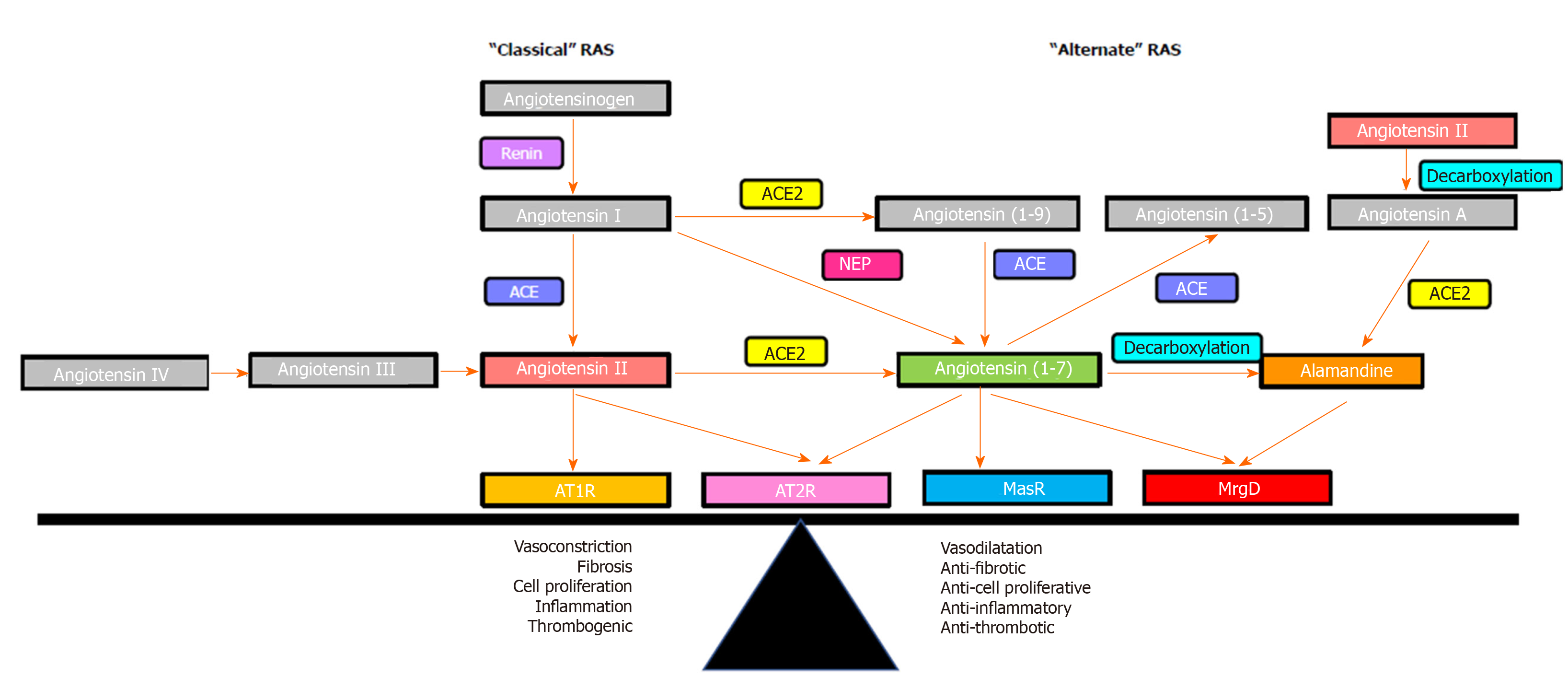Copyright
©The Author(s) 2020.
World J Gastroenterol. Oct 28, 2020; 26(40): 6111-6140
Published online Oct 28, 2020. doi: 10.3748/wjg.v26.i40.6111
Published online Oct 28, 2020. doi: 10.3748/wjg.v26.i40.6111
Figure 3 Overview of the renin angiotensin system.
The effects of the renin angiotensin system (RAS) are determined by the balance between its “classical axis” and the “alternate axis”. Classical axis comprises of angiotensin converting enzyme, angiotensin II, angiotensin II type 1 receptor (AT1R) and angiotensin II type 2 receptor (AT2R), which mediate vasoconstrictive (AT1R) or vasodilatory (AT2R) functions, proinflammatory and profibrogenic pathways. The alternate axis comprises of angiotensin converting enzyme 2, angiotensin-(1-7) and the Mas receptor opposes the effects of the classical RAS[53]. Recent studies identified that the vasodilatory action of angiotensin-(1-7) is also mediated via the Mas-related G protein-coupled receptor-type D, which also mediates the action of alamandine. RAS: Renin angiotensin system; ACE: Angiotensin converting enzyme; ACE2: Angiotensin converting enzyme 2; AT1R: Angiotensin II type 1 receptor; AT2R: Angiotensin II type 2 receptor; MasR: Mas receptor; MrgD: Mas-related G protein-coupled receptor-type D.
- Citation: Gunarathne LS, Rajapaksha H, Shackel N, Angus PW, Herath CB. Cirrhotic portal hypertension: From pathophysiology to novel therapeutics. World J Gastroenterol 2020; 26(40): 6111-6140
- URL: https://www.wjgnet.com/1007-9327/full/v26/i40/6111.htm
- DOI: https://dx.doi.org/10.3748/wjg.v26.i40.6111









